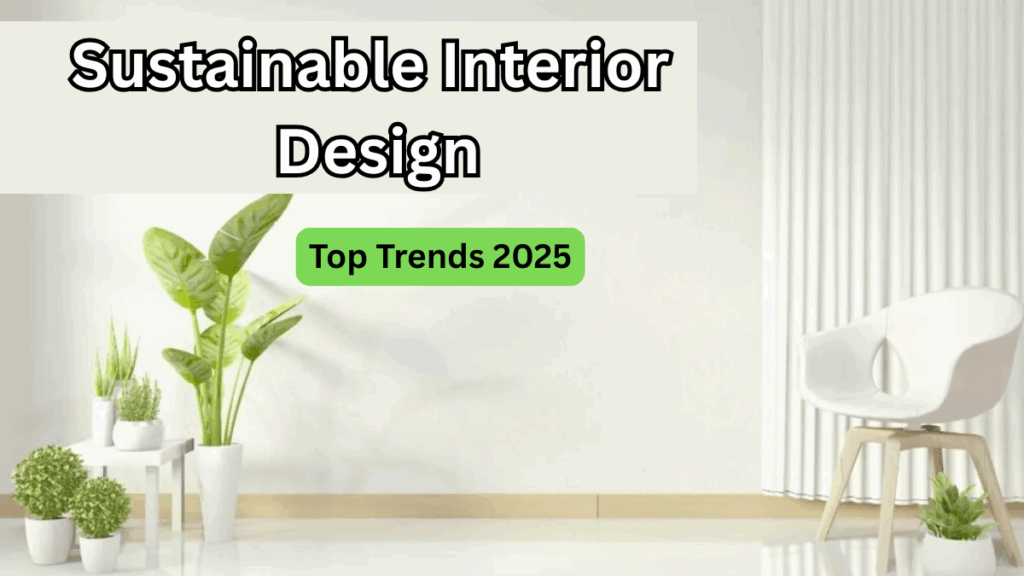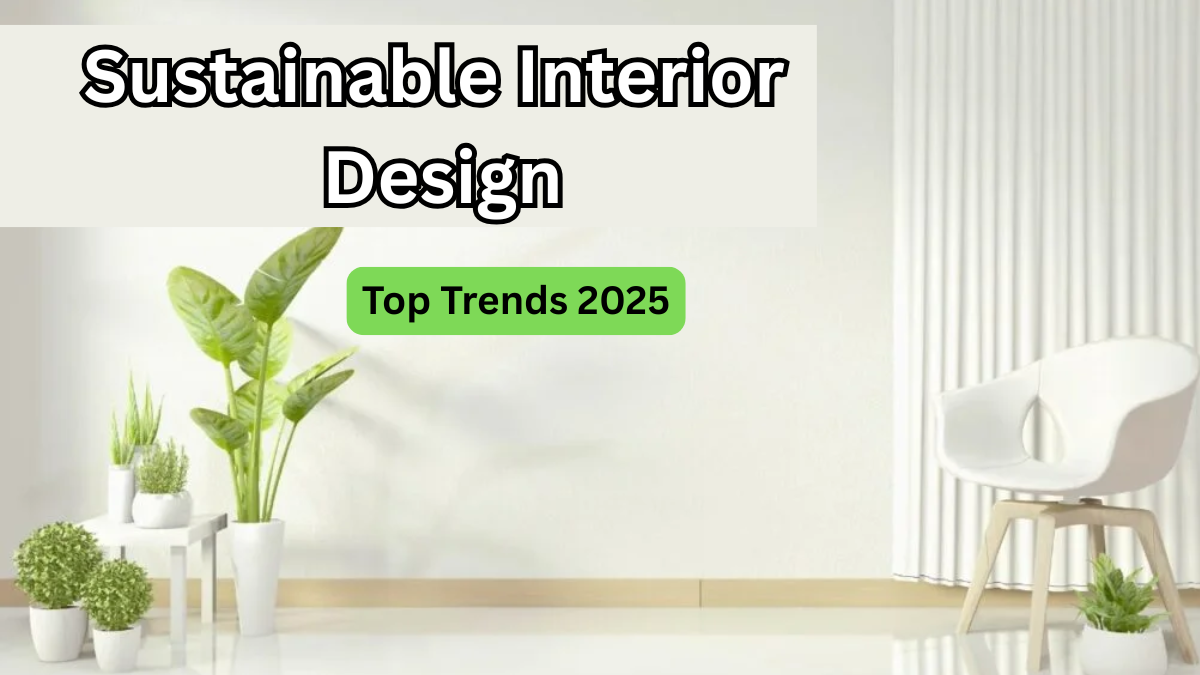The way we design our homes and workspaces is changing, and Sustainable Interior Design Trends 2025 are at the forefront of this shift. With growing awareness about climate change and the need for eco-friendly living, designers and homeowners are embracing green materials and innovative solutions to make spaces both beautiful and sustainable.
So, what’s shaping the future of interior design? Let’s dive into the top trends for 2025 that are redefining how we create responsible, stylish spaces.

Why Sustainable Interior Design Matters
Sustainability in design goes beyond aesthetics—it’s about making mindful choices that reduce environmental impact. This means:
-
Using green materials like recycled wood, bamboo, and eco-friendly fabrics.
-
Incorporating energy-efficient lighting and appliances.
-
Designing with long-term durability in mind to reduce waste.
-
Prioritizing indoor air quality and overall well-being.
These elements are no longer “nice-to-haves”—they’re essential.
Top Sustainable Interior Design Trends 2025
Biophilic Design
Bringing nature indoors isn’t new, but in 2025 it’s getting a big upgrade. Think:
-
Indoor gardens and vertical green walls.
-
Large windows for natural light and ventilation.
-
Organic shapes and earthy textures for a calming environment.
Reclaimed & Upcycled Furniture
Instead of mass-produced furniture, homeowners are leaning toward:
-
Restoring old pieces instead of discarding them.
-
Using reclaimed wood, metals, and glass for unique furniture designs.
Smart, Energy-Efficient Homes
Technology meets sustainability with:
-
Smart thermostats and lighting systems.
-
Solar-powered appliances and energy-saving devices.
Minimalist yet Warm Interiors
Minimalism doesn’t mean cold and empty. Designers are combining:
-
Neutral tones with pops of natural greenery.
-
Multi-purpose furniture to maximize space efficiency.
Use of Green Materials
One of the most dominant Sustainable Interior Design Trends 2025 is the use of:
-
Non-toxic paints and adhesives.
-
Bamboo, cork, and organic cotton for flooring, furniture, and textiles.
Vertical Table: Popular Green Materials for 2025
| Material | Why It’s Trending | Best Used For |
|---|---|---|
| Bamboo | Rapidly renewable, durable | Flooring, furniture |
| Reclaimed Wood | Reduces deforestation, unique look | Tables, wall panels |
| Cork | Biodegradable, sound-absorbing | Flooring, décor items |
| Organic Cotton | Chemical-free, breathable | Curtains, upholstery |
| Recycled Metal | Reduces mining impact | Fixtures, frames |
Designing for a Greener Future
The biggest takeaway from Sustainable Interior Design Trends 2025? Eco-friendly doesn’t mean boring. With the right blend of green materials, smart design, and personal creativity, you can create a space that’s not only sustainable but also feels warm, modern, and inviting.
FAQs
1. What is sustainable interior design?
It’s an approach that focuses on using eco-friendly materials, energy-efficient systems, and designs that reduce environmental impact.
2. Why are green materials important in interior design?
They help minimize carbon footprints, improve indoor air quality, and ensure long-term durability without harming the planet.
3. Are sustainable interiors more expensive?
While some eco-friendly materials may cost more upfront, they usually save money in the long run due to their durability and energy efficiency.
4. How can I make my home more sustainable in 2025?
Start small—use energy-saving appliances, choose furniture made from reclaimed or recycled materials, and bring in more natural light and greenery.
Click here to learn more
